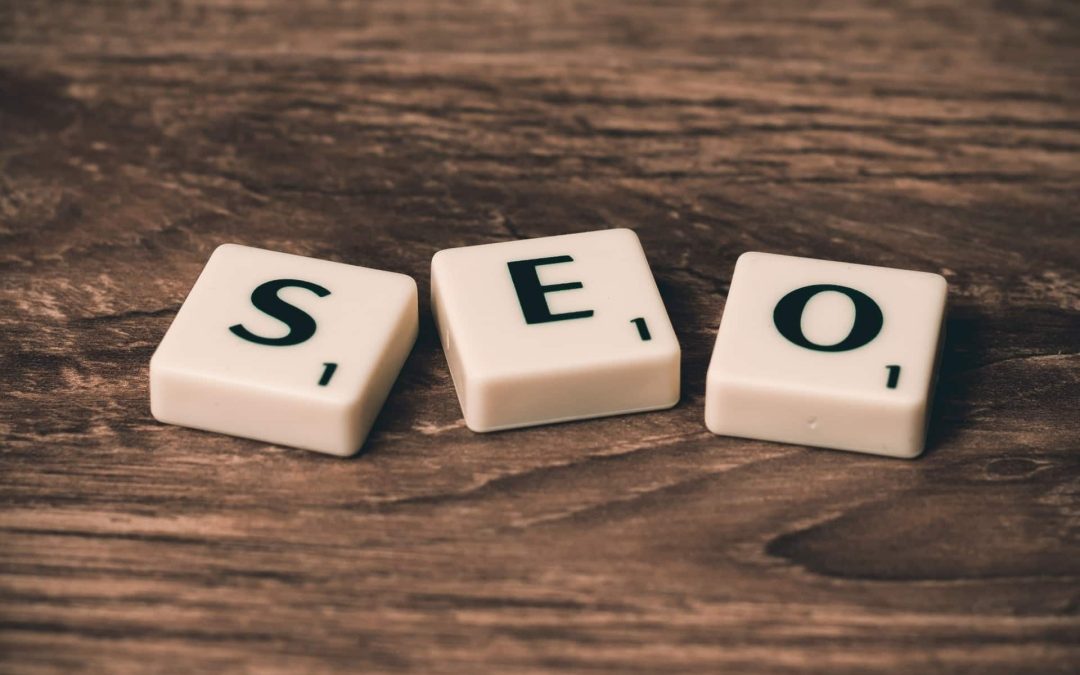Optimized Landing Page
In today’s digital landscape, optimized landing page content is crucial for boosting conversions. A well-crafted landing page can make all the difference in capturing the attention of your target audience and persuading them to take the desired action, whether it’s making a purchase, filling out a form, or subscribing to a newsletter.
When it comes to content optimization, it’s about more than just making your landing page visually appealing. It’s about crafting a compelling narrative that engages your audience and guides them through the conversion funnel. By understanding the needs, preferences, and motivations of your target audience, you can tailor your messaging and create a seamless user experience that drives conversions.
In this article, we will explore the importance of optimizing landing page content and delve into the key elements and best practices that can help you achieve maximum conversions. We will also discuss the importance of tracking and analyzing the performance of your landing pages to make data-driven optimizations.
So, whether you’re a seasoned marketer looking to refine your strategies or a business owner trying to make the most out of your online presence, this article will provide you with valuable insights and actionable tips to supercharge your landing page conversions. Let’s dive in!
Understanding Your Target Audience
When it comes to optimizing landing page content for maximum conversions, one of the first and most crucial steps is understanding your target audience. By delving deep into the minds and preferences of your potential customers, you can create tailored content that resonates with them and compels them to take action.
Defining your target audience is the initial step in this process. It involves identifying the specific group of individuals who are most likely to be interested in your product or service. This could be based on factors such as demographics (age, gender, location) or psychographics (interests, values, lifestyle). By clearly defining your target audience, you can ensure that your content is directed towards the right people, increasing the likelihood of conversions.
Once you have a clear understanding of your target audience, the next step is conducting market research. This involves gathering information about your target audience’s needs, preferences, and pain points. By analyzing market trends, competitor analysis, and customer feedback, you can gain valuable insights into what motivates your audience and what they are looking for in a product or service.
To further refine your understanding of your target audience, creating buyer personas can be immensely helpful. A buyer persona is a fictional representation of your ideal customer, based on real data and research. It encompasses details such as demographics, behavior patterns, motivations, and goals. By creating detailed buyer personas, you can develop a deeper understanding of your audience and tailor your content to their specific needs and desires.
In summary, understanding your target audience is a crucial step in optimizing landing page content for conversions. By defining your target audience, conducting market research, and creating buyer personas, you can gain valuable insights that will inform your content strategy and help you create engaging and persuasive content that resonates with your audience. So, don’t underestimate the power of audience understanding in driving conversions and take the time to delve into the minds of your potential customers.
If you’re looking for tools to assist you in your content optimization journey, be sure to check out content optimization tools, which can provide valuable insights and suggestions for improving your landing page content.
Key Elements of Optimized Landing Page Content
When it comes to optimizing landing page content for maximum conversions, there are several key elements that play a crucial role in capturing the attention of your target audience and compelling them to take action. Let’s explore these elements in detail:
Clear and Compelling Headlines
The headline of your landing page is the first thing that visitors see, and it needs to make a strong impression. A clear and compelling headline not only grabs attention but also conveys the value proposition of your product or service. It should be concise, yet powerful enough to spark curiosity and entice visitors to explore further.
Engaging and Persuasive Copy
Once you have captured your audience’s attention with an enticing headline, it is important to maintain their interest through engaging and persuasive copy. Engaging and persuasive copy should highlight the unique features and benefits of your offering, addressing the pain points of your audience and demonstrating how your product or service can solve their problems. It should be written in a conversational tone, using language that resonates with your target audience.
Relevant and Benefit-Focused Messaging
To truly connect with your audience, it is crucial to deliver relevant and benefit-focused messaging. This means understanding the needs and desires of your target audience and tailoring your content to address those specific pain points. By highlighting the benefits of your product or service and showing how it can improve the lives of your customers, you can create a strong emotional connection that compels them to take action.
Concise and Scannable Format
In today’s fast-paced digital world, attention spans are shorter than ever. To ensure that your landing page content is effective, it needs to be concise and scannable. Break up your content into short paragraphs, use subheadings to guide readers, and employ bullet points or numbered lists to convey information quickly and efficiently. This makes it easier for visitors to consume your content and understand the value you are offering.
Strong Call-to-Action (CTA)
A strong call-to-action (CTA) is essential for driving conversions on your landing page. It should be clear, compelling, and prominently displayed. Use action-oriented language that encourages visitors to take the desired action, whether it’s making a purchase, signing up for a newsletter, or downloading a resource. Make sure your CTA stands out visually and is positioned strategically on the page to maximize its impact.
Trust Signals and Social Proof
Building trust is crucial for converting visitors into customers. Incorporating trust signals and social proof on your landing page can help establish credibility and alleviate any concerns or doubts your audience may have. This can include customer testimonials, reviews, case studies, certifications, awards, or any other form of validation that demonstrates the reliability and quality of your offering.
Visuals and Multimedia
Incorporating relevant visuals and multimedia elements can greatly enhance the effectiveness of your landing page content. Visuals and multimedia not only make your page more visually appealing but also help convey information in a more engaging and memorable way. This can include high-quality images, videos, infographics, or interactive elements that showcase your product or service and provide a richer experience for your audience.
By optimizing these key elements of your landing page content, you can create a compelling user experience that captivates your audience and drives them towards conversion. Remember, continuous testing and optimization are key to achieving optimal results. So, put these strategies into action and watch your conversions soar.
Best Practices for Optimizing Landing Page Content
When it comes to optimizing landing page content, there are several best practices that can greatly enhance your chances of converting visitors into customers. These practices ensure that your content is compelling, engaging, and tailored to meet the needs of your target audience. By implementing these strategies, you can maximize the effectiveness of your landing pages and drive higher conversion rates.
Conducting A/B testing
One of the most effective ways to optimize your landing page content is through A/B testing. This involves creating multiple versions of your landing page and testing them against each other to determine which one performs better. By analyzing the results, you can identify which elements of your content are resonating with your audience and make data-driven decisions to refine and improve your landing page.
Using persuasive language and emotional appeal
To capture the attention of your audience and compel them to take action, it’s crucial to use persuasive language and tap into their emotions. Craft your copy in a way that evokes a sense of urgency, highlights the benefits of your product or service, and addresses the pain points of your target audience. By appealing to their emotions, you can create a strong connection and motivate them to convert.
Incorporating relevant keywords
Optimizing your landing page content for relevant keywords is essential for improving your search engine rankings and attracting qualified traffic. Conduct thorough keyword research to identify the terms and phrases that your target audience is using to find products or services like yours. Then, strategically incorporate these keywords throughout your content, including in your headlines, subheadings, and body copy. This will help search engines understand the relevance of your page and increase its visibility to potential customers.
Keeping content concise and focused
In today’s fast-paced digital world, attention spans are shorter than ever. To ensure that your landing page content is effective, it’s important to keep it concise and focused. Avoid unnecessary fluff and get straight to the point. Use clear and concise language to convey your message and communicate the value of your offering. Break up your content into easily digestible sections and use bullet points or numbered lists to highlight key information.
Optimizing for mobile devices
With the majority of internet users accessing websites on their mobile devices, it’s crucial to optimize your landing page content for mobile responsiveness. Make sure that your page is easily accessible and navigable on smartphones and tablets. Optimize images and videos for mobile viewing and ensure that your content loads quickly on mobile devices. By providing a seamless mobile experience, you can engage your audience and increase the likelihood of conversions.
Testing and improving loading speed
The loading speed of your landing page can have a significant impact on user experience and conversion rates. Slow-loading pages can frustrate visitors and cause them to abandon your site before taking any action. To optimize your landing page content for speed, minimize the file sizes of your images and videos, eliminate unnecessary scripts or plugins, and leverage caching techniques. Regularly test your page’s loading speed and make improvements as needed to ensure a smooth and efficient user experience.
By implementing these best practices for optimizing landing page content, you can significantly increase your chances of converting visitors into customers. Remember to continuously monitor and analyze the performance of your landing pages, making data-driven optimizations to maximize conversions. With a well-optimized landing page, you can create a compelling user experience that drives results for your business.
content optimization tools | seo-friendly content | optimizing website content | content optimization tips
Tracking and Analyzing Landing Page Performance
To truly optimize your landing page content and maximize conversions, it is essential to track and analyze its performance. This allows you to gain valuable insights into how visitors are interacting with your page and make data-driven optimizations to improve its effectiveness.
Setting up conversion tracking
One of the first steps in tracking your landing page performance is setting up conversion tracking. This involves identifying the specific actions that you consider as conversions, such as completing a purchase, signing up for a newsletter, or downloading a resource. By tracking these conversions, you can measure the success of your landing page and identify areas for improvement.
Utilizing analytics tools
To gain deeper insights into your landing page’s performance, it is crucial to utilize analytics tools. These tools provide valuable data on user behavior, engagement, and demographics. By analyzing metrics such as bounce rate, time on page, and conversion rates, you can uncover patterns and trends that can guide your optimization efforts.
There are several popular analytics tools available, including Google Analytics and Adobe Analytics, which offer comprehensive tracking capabilities and detailed reports. These tools provide a wealth of information that can help you understand how visitors are interacting with your landing page and identify areas that need improvement.
Analyzing user behavior and engagement
Understanding how users behave and engage with your landing page is vital for optimizing its performance. By analyzing user behavior, you can identify potential pain points or barriers that may be hindering conversions. Are visitors spending a significant amount of time on your page? Are they scrolling down to view all the content? Or are they quickly leaving without taking any action?
Examining user engagement metrics, such as click-through rates, scroll depth, and form completion rates, can provide valuable insights into how visitors are interacting with your page. This data can help you identify areas of improvement and tailor your content to better meet the needs and expectations of your target audience.
Making data-driven optimizations
Once you have collected and analyzed the data from your landing page, it’s time to make data-driven optimizations. By using the insights gained from conversion tracking and analytics tools, you can identify specific areas for improvement and implement changes that are likely to have a positive impact on your conversions.
For example, if you notice that visitors are spending a significant amount of time on your page but not converting, you may need to revise your call-to-action (CTA) or make your value proposition more compelling. On the other hand, if visitors are leaving your page without scrolling down to view all the content, you may need to restructure your page layout or make your headlines more engaging.
By continuously monitoring your landing page’s performance and making data-driven optimizations, you can ensure that your content is always optimized to drive maximum conversions.
In conclusion, tracking and analyzing your landing page’s performance is essential for optimizing its content and maximizing conversions. By setting up conversion tracking, utilizing analytics tools, analyzing user behavior and engagement, and making data-driven optimizations, you can continuously improve the effectiveness of your landing page and achieve your conversion goals.
Conclusion
In conclusion, optimizing landing page content is crucial for maximizing conversions and driving business growth. By understanding your target audience, incorporating key elements of optimized content, following best practices, and tracking performance, you can create a compelling and persuasive user experience that converts visitors into customers.
To recap, defining your target audience and conducting thorough market research allows you to tailor your content to their needs and preferences. This can be further enhanced by creating buyer personas that represent your ideal customers.
When it comes to the actual content on your landing page, several key elements play a vital role in boosting conversions. Clear and compelling headlines grab the attention of visitors and entice them to read further. Engaging and persuasive copy keeps them interested and convinces them of the value your product or service provides. Relevant and benefit-focused messaging highlights how your offering solves their pain points and fulfills their desires.
In terms of formatting, a concise and scannable structure ensures that visitors can quickly and easily digest the information. Using a strong call-to-action (CTA) prompts them to take the desired action, whether it’s making a purchase, signing up for a newsletter, or requesting more information. Trust signals and social proof, such as customer testimonials and reviews, establish credibility and build trust with your audience. Additionally, incorporating visuals and multimedia, such as images, videos, and infographics, can enhance the overall user experience and further engage visitors.
To optimize your landing page content effectively, it’s essential to follow best practices. Conduct A/B testing to experiment with different versions of your content and determine what resonates best with your audience. Use persuasive language and emotional appeal to connect with visitors on a deeper level and motivate them to take action. Incorporate relevant keywords to improve your search engine visibility and attract organic traffic. Keep your content concise and focused, avoiding unnecessary fluff that may distract or confuse visitors. Ensure your landing page is optimized for mobile devices, as more and more users are accessing the internet from their smartphones and tablets. Lastly, regularly test and improve your loading speed to provide a seamless browsing experience.
Tracking and analyzing your landing page performance is crucial for continuous improvement. Set up conversion tracking to monitor the effectiveness of your content in driving desired actions. Utilize analytics tools to gain insights into user behavior and engagement, allowing you to identify areas for improvement. By making data-driven optimizations, you can refine your content and design to better meet the needs of your audience and maximize conversions.
In summary, to achieve optimal results from your landing page, it is imperative to continuously optimize your content. By incorporating content optimization techniques, following best practices, and leveraging data-driven insights, you can create a powerful and persuasive user experience that drives conversions and propels your business forward.
Remember, content optimization is an ongoing process. Stay up to date with content optimization best practices and explore different strategies to stay ahead of the competition. Embrace the power of optimized content and watch your conversion rates soar.
To learn more about content optimization tools and techniques, check out our content optimization resources to take your online presence to the next level.












0 Comments